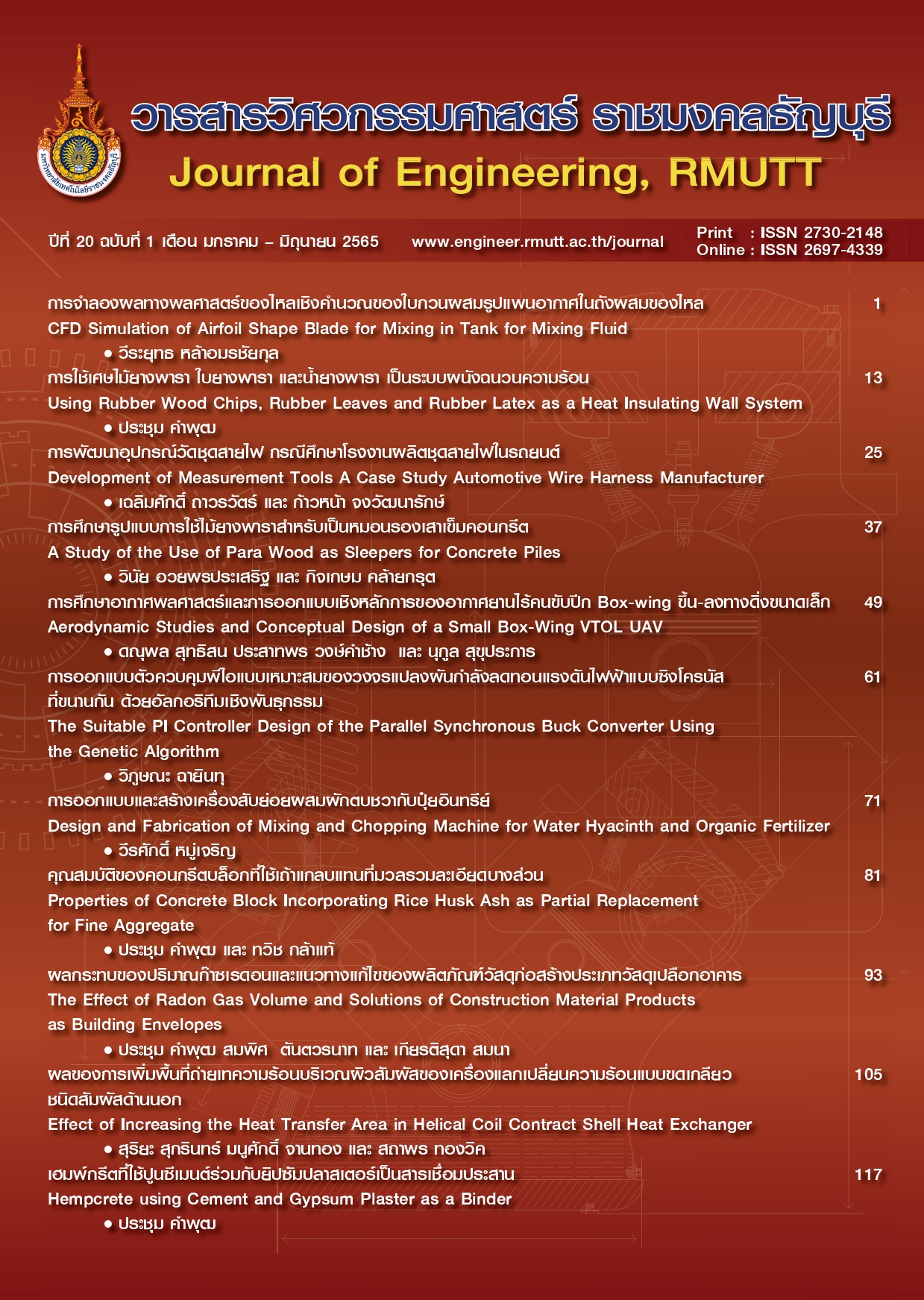The Effect of Radon Gas Volume and Solutions of Construction Material Products as Building Envelopes
Main Article Content
Abstract
This research aimed to investigate the effect of radon gas volume and solutions of construction material products as building envelopes. Radon gas is an odorless gas naturally found in soil, rock and sand and is produced by the decay of the elements radium and uranium. This is the main raw material in the construction industry which causes the raw materials and building materials to release radon gas. Especially in buildings and rooms with poor ventilation and improper building materials. This research investigated radon emissions from 4 types of raw building materials and building envelope material products such as wall building materials, floor and other building materials. After that, the product with the highest radon emissions was selected and modelled into a room to study the radon emission value and calculate the annual effective radiation dose that residents were likely to experience. Moreover, this was to try develop methods and solving problems guideline. From the study, it was found that sand had the most radon gas emissions of all raw materials. Aerated blocks from North area were the most radon-emitting building material products. When a mock room was built, radon emission values did not exceed the recommended values similar to calculating the radiation volume of annual resident. From the research, plastering and interior plastic painting reduced radon emissions from building materials in turn reducing air pollution and maintaining the health of the residents of the building as well.
Article Details

This work is licensed under a Creative Commons Attribution-NonCommercial-NoDerivatives 4.0 International License.
The manuscript, information, content, picture and so forth which were published on Frontiers in engineering innovation research has been a copyright of this journal only. There is not allow anyone or any organize to duplicate all content or some document for unethical publication.
References
United Nations Scientific Committee on the Effects of Atomic Radiation Sources and Effects of Ionizing Radiation. Sources and Effect of Ionizing Radiation. UNSCEAR, New York, 2008.
Kumnuantip C, Radon gas in buildings and construction materials. Journal of Engineering RMUTT. 2009;7(1):1–11. (in Thai)
Panpiboon P, Atyotha V, Choawanklarng V, Sola P, Measuring the concentration of radonin the air at Amphur Meaung, mahasarakham Province.Research report. Rajabhat Maha Sarakham University; 2016. (in Thai)
Pariyawatkul P, Radon. Working Conditions Safety Group, Office of Safety Technology; 2014 [sited 2022 May 1]. Available from:http://php.diw.go.th/safety/wp-content/uploads/2014/03/8Radon.pdf
Otoo F, Darko E.O, Emi-Reynolds G, Andam A.B, Adukpo O.K, Radiological impact of soil as a source of Building material, Radiat. Prot. Environ, 2012;35:22-8.
Srisuwan T, Wanabonges P, Tantasavasdi C, The influence of finishing materials on radon exhalation from concrete with phosphogypsum additives, Journal of Architectural/Planning Research and Studies (JARS). 2012;9(2):105–12. (in Thai)
National Cancer Institute. Indoor air pollution, Aggressive cancer news, Cancer Institute National Medical Department, Ministry of Public Health; [sited 2022 May 1]. Available from : https://www.nci.go.th/en/Knowledge/download/4.pdf.
International Commission on Radiological Protection, Age-dependent doses to members of the public from Intake of Radionuclides-Part 1. ICRP Publication 56. 1990;20(2)


